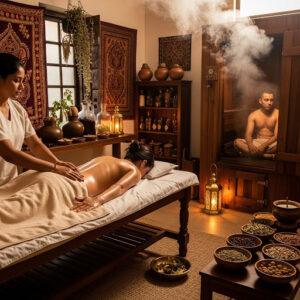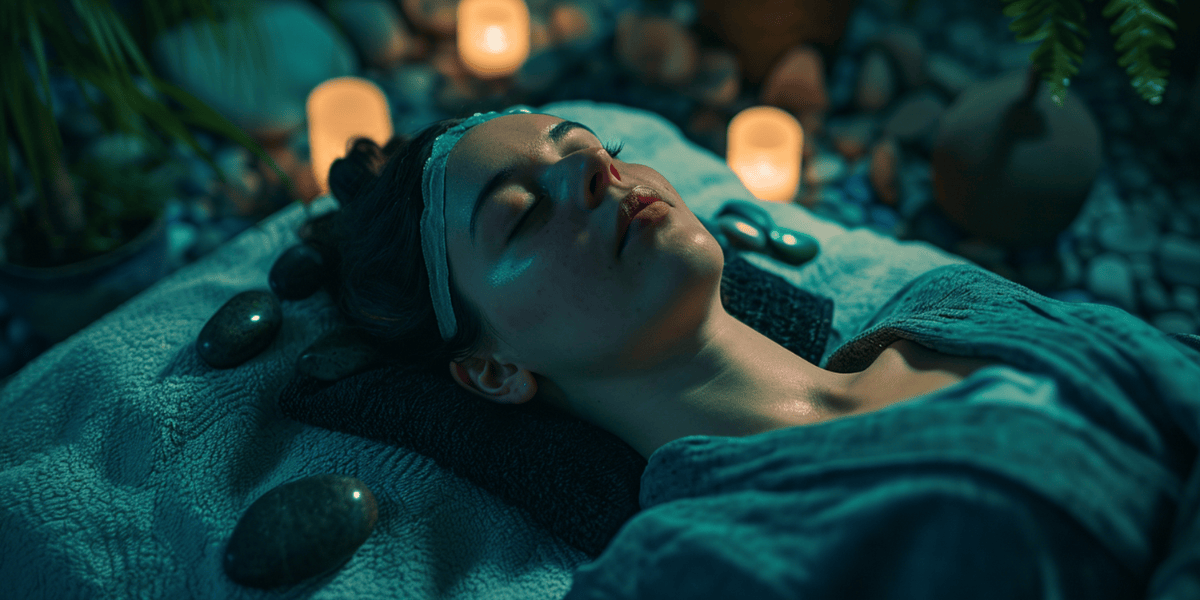What is Panchakarma? (In Simple Words)
The word “Panchakarma” comes from two Sanskrit words: “Pancha” meaning five, and “Karma” meaning actions or therapies. So, it translates to “five actions” or “five treatments.” In Ayurveda, India’s traditional system of medicine, Panchakarma is considered the ultimate purification and detoxification method. It’s important because it aims to remove the root causes of disease by balancing the body’s vital energies, known as doshas (Vata, Pitta, and Kapha).
Why Do We Need a Detox?
How Panchakarma Cleans the Body
Here are the five main steps, explained simply:
- Vamana (Vomit Therapy): This therapy uses specific herbal preparations to induce controlled vomiting, primarily to eliminate excess Kapha (mucus) and toxins from the upper respiratory and gastrointestinal tracts. It’s often prescribed for conditions like asthma, allergies, and certain skin disorders.
- Virechana (Purgation): This involves medicated purgation, usually with herbal laxatives, to cleanse the small intestine, liver, and gallbladder. It effectively removes excess Pitta (fire) and toxins, beneficial for digestive issues, skin conditions, and inflammatory disorders.
- Basti (Herbal Enema): Considered the most powerful of the five therapies, Basti involves administering medicated oils or herbal decoctions into the colon as an enema. It’s particularly effective for balancing Vata (air and space) and addressing a wide range of conditions, including chronic pain, neurological disorders, and digestive imbalances.
- Nasya (Nose Treatment): This therapy involves administering medicated oils or herbal powders through the nasal passages. It cleanses and nourishes the head region, benefiting conditions like headaches, sinusitis, allergies, and improving mental clarity.
- Raktamokshana (Blood Cleansing): This is a specialized therapy involving controlled bloodletting (often using leeches or venipuncture) to purify the blood. It’s used for specific blood-related disorders, skin conditions, and localized pain, but is less commonly practiced today and requires expert supervision.
What Happens During the Treatment?

- Massage with warm oils: Known as Snehana, these therapeutic massages (like Abhyanga) are integral, helping to lubricate channels, loosen toxins, and relax the body and mind.
- Steam baths: Swedana, or therapeutic sweating, often follows oil massages, opening up pores and channels to facilitate toxin elimination.
- Herbal medicines: Specific Ayurvedic herbs are prescribed throughout the process to support detoxification, strengthen organs, and rebalance doshas.
- Special diet: A crucial part of Panchakarma is following a light, easily digestible, and personalized diet (often kitchari) to support the digestive fire and prevent new toxin formation.
How Does it Help the Mind and Body?

- Removes stress: By calming the nervous system and eliminating physical tension, Panchakarma is a powerful Ayurveda for stress relief.
- Improves sleep: A cleansed and balanced system naturally leads to more restorative sleep.
- Calms anger, worry: By balancing Pitta and Vata doshas, it helps regulate emotions, leading to greater mental peace and emotional clarity.
- Boosts energy levels: When toxins are gone, your body’s vital energy (Prana) can flow freely, enhancing vitality.
- Enhances digestion and metabolism: The cleansing process rejuvenates your digestive fire, leading to better nutrient absorption.
- Supports mental clarity and focus: A clearer body leads to a clearer mind, making it an excellent Panchakarma for mental clarity.
Behind It (Simple Words)
- Lower inflammation in the body: By removing toxins, it helps calm chronic inflammation linked to many modern diseases.
- Improve metabolism and gut function: The therapies support a healthy gut microbiome and efficient digestive processes.
- Remove fat-soluble toxins from the tissues: Unlike superficial detoxes, Panchakarma’s oleation and elimination methods can reach and remove deeply embedded toxins.
- Balance stress hormones like cortisol: The holistic nature of the treatment helps regulate the body’s stress response, aiding in overall well-being. This helps to reset your body with Ayurveda.
Who Can Do Panchakarma?
- Chronic stress and fatigue
- Persistent skin issues (acne, eczema, psoriasis)
- Digestive problems (IBS, bloating, constipation)
- Joint pain or stiffness
- Seasonal allergies
- Anxiety, mild depression, or irritability
- Those looking for overall wellness and disease prevention.
However, it’s crucial to undergo Panchakarma under the guidance of a qualified Ayurvedic doctor, as it’s a powerful therapy that requires proper assessment and supervision.
For an authentic and transformative Ayurvedic detox therapy, consider a retreat at a specialized center. At Ayurvedgram Wellness Retreat, experienced practitioners guide you through a personalized Panchakarma process, helping you experience the profound benefits of this ancient mind-body cleansing system and truly reset your mind and body for lasting health and vitality.


 医療観光
医療観光
